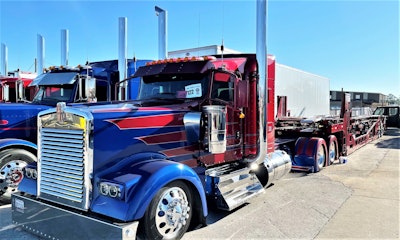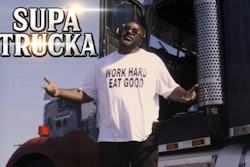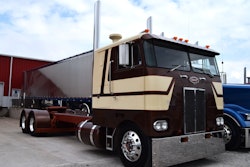
Previously in this series: Turmoil in the auto market, rates challenges buff the shine off earning potential in car hauling
As noted in the first part of this series, patience is a virtue in car hauling – in more ways than one. Moving cars up and down the highway is more or less similar to hauling other freight, yet there's a significant learning curve when it comes to loading and securing vehicles on a car-haul trailer.
Soza Trucking owner-operator C.G. Soza said a good rule of thumb for truckers new to car hauling is to stick it out as you learn the ropes. Those first 30 days could be frustrating for those without reserves of patience.
Soza's schooled a few owner-ops from scratch when they leased on with him, he said. “One guy had no experience, and I trained him from day one. I told him to give it 30 days. 'You’ll hate it. I hated it. But give it 30 days before you quit.'”
Soza himself almost did just that when he first got into the niche in 2017 with a business partner. “I hated it with a passion,” he said. But after sticking it out for a month and seeing the money come in, his outlook changed. He came to enjoy the complicated aspects of loading, and eventually struck out on his own in 2018 after a falling-out with that business partner.

“I tell [new car haulers] you’ll find yourself getting frustrated, having to make 50 trips around the truck to get things tied down, but that’s normal,” he said. “Don’t be surprised if you load seven of eight cars and have to unload all seven and do it all over again to get them to fit. That’s part of the learning curve.”
Soza said that by the 45- to 60-day mark, drivers who are going to be successful have settled in and started to figure it out.
Any operators considering jumping into car hauling without a guiding hand or prior experience may be in for a long road ahead. If that’s the case, Soza recommended starting out with a three- or four-car wedge trailer – “basically a long ramp with wheels on it,” he said. Operators can get their feet wet that way before working up to a seven- or eight-car trailer, or even a nine-car or larger stinger-steer setup with the rack on the tractor and a different fifth-wheel setup.
[Related: Hotshot car haul for the long haul: Kendall Enterprises]
Loading cars onto a trailer might be described as a science, but there's plenty art to it, too. It’s hardly ever exact, said David Bunting, owner of Fort Wayne, Indiana-based B Line Transport. With a stinger truck, the first vehicle is almost always backed on and goes up and over the cab of the tractor.
“The butt end has to sit in those pockets, then you put it down on the hood [of the truck] – that’s what gets it at the proper angle” to avoid being overheight, Bunting said. “The No. 2 car behind the sleeper is almost always driven on" straight ahead. "You drop the butt end of it, and you gain the angle of the windshield. You set a pickup truck, drop the butt end of it two to three feet, and the windshield comes down and you get that angle to help get your height. The lower car behind the cab always has to be backed on."
Bunting gave the example of a Chevy Tahoe SUV on the top rack and a Malibu sedan on the bottom. "The back end of the Tahoe goes down and goes over the hood of the Malibu, its lowest point," he said. "The steer tires sit down over the trunk of the Malibu, and the top of the Malibu goes up in that space that is between what would be the ground and the frame rail of the Tahoe. That’s how you learn to stack stuff. It’s got to be a certain way to go on there.”
Bunting has been hauling cars for 20 years and worked his way up from smaller units to now having a nine-car stinger (pictured at the top) and a five-car trailer he uses with a second tractor.
He echoed Soza in noting that owner-ops starting out might work their way up by starting with a three-car wedge, “where you learn you’ve got to keep the cars fist-width apart, bumper to bumper,” so they don’t rub while going down the road, he said. After that, you can graduate up to a five-car “tipper” trailer, where you “back a vehicle onto it, strap it down, then tip it up and put another vehicle’s nose under it.” That, he said, will help operators learn what types of vehicles will fit over the top of each other.
At that point, it’s up to the operator on where he or she wants to go.
[Related: Soza Trucking builds solid foundation in car haul]
Making the freight choice: Haul new, used or both?
 C.G. Soza, based in Atwater, California, hauls mostly used cars with his 2016 Kenworth W900L and eight-car Cottrell high-mount trailer (pictured). The used-vehicle focus has been a boon to his business this year as new-vehicle production suffers a shortfall related to computer-chip and other parts shortages.
C.G. Soza, based in Atwater, California, hauls mostly used cars with his 2016 Kenworth W900L and eight-car Cottrell high-mount trailer (pictured). The used-vehicle focus has been a boon to his business this year as new-vehicle production suffers a shortfall related to computer-chip and other parts shortages.
Car haulers, like owner-operators in other industry segments, can secure freight either through contracts with individual dealers, manufacturers and used-car auction houses as transport service providers, or through auto transport brokers via load boards or direct relationships. There are several auto-hauling-focused load boards out there, including Central Dispatch, MetroGistics, Super Dispatch, RunBuggy and others. Also as with the general freight world, some of the larger car-hauling fleets have their own internal load boards that they broker cars through.
Established car haulers leverage the relationships they’ve built to ink freight contracts, securing more stable rates and freight far from the up-and-down whims of single-load negotiations.
Atlanta-area-headquartered Turner Transport owner Eric Turner works mostly this way – his contracts are with dealers to haul a lot of new cars. One advantage: The loading process for new cars tends to be easier, because you know going into each load what size the cars are going to be, and thus how many you can handle.
 Ellenwood, Georgia-based Eric Turner, owner of Turner Transport Truck Lines, owns five car haulers – including "Showtime," this 2015 Peterbilt 389 with an eight-car Wally-Mo trailer. After the Great Recession, Turner wanted to make sure his business was covered in case of another economic downturn, so he added four reefer units to his fleet, which helped the company survive the COVID-19 pandemic when auto freight dropped off.Jason Kindig
Ellenwood, Georgia-based Eric Turner, owner of Turner Transport Truck Lines, owns five car haulers – including "Showtime," this 2015 Peterbilt 389 with an eight-car Wally-Mo trailer. After the Great Recession, Turner wanted to make sure his business was covered in case of another economic downturn, so he added four reefer units to his fleet, which helped the company survive the COVID-19 pandemic when auto freight dropped off.Jason Kindig
Soza, who now hauls mostly direct for dealers buying used cars at auction, said you have to know the questions to ask when you’re picking up used vehicles – especially SUVs and pickups, because so many of them have lifted suspensions, making them taller.
“Fortunately, with experience, when [a customer] gives you a list of cars, you can kind of figure out in your head what to do with it,” Soza added, to get the best fit on the trailer. “But some of the trial and error," even for an experienced hand like him, is necessary. "You forget to ask if they [have lifted suspensions, or] whether they run. ... If you’ve got pickups, are they lifted or not lifted, are they duallys?”
Answers to those kinds of questions should also impact your rate, Soza said. With an eight-car high-mount trailer, he can haul eight sedans or smaller cars. But he can only fit five pickups. “That’s a full load for an eight-car,” he added. “You have to bump the [per-car] rate up.”
A car that doesn’t run, and whose working order he doesn't know about in advance, he won't be able to load. “That leaves an empty spot on the truck. I lose revenue or my driver loses revenue," Soza said. "Hopefully there’s a car nearby I can find to pick up to fill that spot.” As noted in the previous story in this series, Soza's made some strides nonetheless in recent years in local business moving non-running units with a four-car Class 7 roll-back wrecker.
With used-car loads, there's bound to be a configuration you've never seen before – even for owner-ops like David Bunting with 20 years of experience. It happened to him just a couple months ago on a used-car load.
Also, Bunting said, “Sometimes if you know what you’re hauling, you can do a blind dispatch," where you show up at a pickup location without specific details on the vehicles, "and sometimes you don’t know" if something will fit or not "until you try." He gave this used-car load example – "say a 2019 Chevy Silverado quad cab 4x4. It’s jacked up, has big tires on it and a big headache rack." It's ten inches taller than it would normally be as a standard model. "You need to know what you’ve got, what you’re loading, where you’re going and how wide, how tall, how long, how heavy. It’s a big mental game.”
Height certainly plays a big role in your routing depending on the part of the country you haul in. Because they’re taller, pickups and SUVs almost always have to go on the top rack of a car hauling trailer. But you still have to keep them low enough to comfortably miss overpasses. In the South, said Turner, you can get away with being a little taller because the bridges tend to be higher.
“When you go running up North, the real car hauling comes into play then,” he said. “You have to be down to 13’6”, 13’7”. The rule of thumb is once you get up past Virginia, you better be low. If you’re not low, you’ll be buying a car” -- or more than one, as it were.
Automaker capital Detroit is particularly bad about having low bridges, Bunting noted, and experienced car haulers know the exact routes from the car plants out of the city to avoid the lower bridges.
Next in this series: Car-haul configurations and costs: High-mount trailers v. stinger-steer setups, insurance requirements, more
Associated podcast: The promise -- and challenges -- of the car-haul trucking niche











